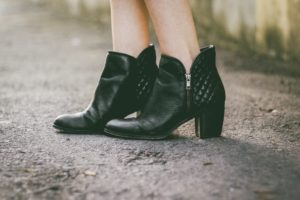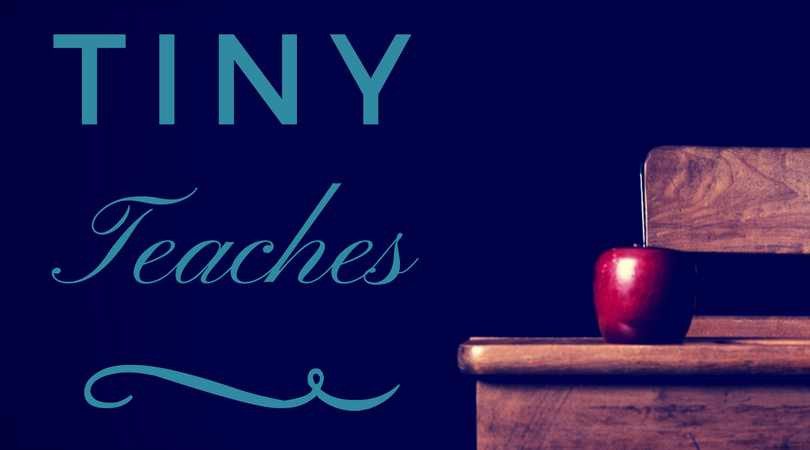Walk a Mile in My Shoes: Limited POV
 Last week, you and I had a chat about different POVs in writing. Remember? if you didn’t, you can catch up on that one over here.
Last week, you and I had a chat about different POVs in writing. Remember? if you didn’t, you can catch up on that one over here.
We discussed the main pros and cons of both limited and omniscient POV and I promised you I would do more detailed posts on both. I’m beginning to doubt the wisdom of that promise but it’s sort of hard to go back on it now, isn’t it? So here we go.
Quick Summary
A Limited POV puts us in the middle of the action. We follow one character and experience the story as they would. The words on the page are their thoughts, emotions and sensory perceptions.
If we were to compare writing to filming, Limited POV would be like a video diary. As if we’re seeing the experiences, emotions and thoughts of the main character.
However, we don’t want our movie to feel like a movie. We don’t want the audience to remember that there is a lens, a cameraman and a couple of directors and editors in between them and the action.
We want them to think they’re living inside the scene.
Wow. That Sounds Amazing. What’s the Catch?
Well, there is one, obviously. Since we stick very close to that one character, we’re not always able to show our audience everything. What about the creepy guy standing behind our main character? Since they can’t see the creep, neither can the audience.
If we need to create suspense, we need to find another way to do that. We can switch POV to another character. Maybe our main character is talking to someone and that someone actually can see the creep. So we could switch to her POV and let her see the weird guy lurking behind her friend’s back.
Only we need to wait for a scene break or a chapter break to do that. If we start jumping from character to character within one scene, it becomes very confusing for our audience. That’s the phenomenon we call “head-hopping.” If there’s one thing I want you to remember, it’s this: don’t go head-hopping.
Well, obviously I want you to remember more than that. But it’s still important.
OK, We Get It. What’s Next?
We talked about all the things we need to keep out of the way, so our audience will feel like they’re in the action. Lens. Cameraman. Editors. Director.
Writers have this too. Tricks or structures we use in our writing that sometimes remind our audience that they’re reading. A fancy word for it is narrative presence. Another might be authorial intrusion. But I’m not a fan of big words. Those of you who have suffered my editing are probably already hearing the next words chime through their brains: “Less is more.” That goes for both big words and authorial intrusion.
There are many ways in which we remind our readers that they are, in fact, reading. Let’s go over them one at a time.
Filters
When writing in a limited POV, we want to read the thoughts and emotions and sensory perceptions of the POV character. We want to feel like we are living his life. The minute you, the author, provide us with an interpretation of those thoughts and emotions, you are inserting your presence between us and the character we want to feel close to.
Look out for phrases like he knew, she saw, they thought, I wondered, etc. Since you are writing in a limited POV, we already know that this is something the character sees-thinks-feels-knows. You don’t have to spell it out for us. In fact. We’d rather you didn’t. Because, you know. Authorial intrusion.
Dialogue Tags
I hear you all thinking. Don’t deny it. Here she goes again with the dialogue tags. Yes. Here I go again.
I’m not saying dialogue tags are the tools of the devil. I’m not even going to talk about using them when you don’t need them. OK maybe just a little. They are another way to insert yourself into the story. But when you use the most basic dialogue tag you possibly could, that intrusion is minimal. So a he said or she asked will not kill your story. For more info on the use of dialogue tags, check out my article on the subject.
Again, less is more. That goes for the number of dialogue tags you use, and the kind of dialogue tags you use. If you’re going to open a thesaurus and look for a different way to say said in every single line, your readers may run away screaming.
Examples you say?

That’s just the letter A. There are plenty more. Don’t use them. Pretty please? And let’s please not get into dialogue tags that aren’t even supposed to be dialogue tags. People can grimace, frown, sneer, smile or grin. But you can’t use them as dialogue tags. Ever. As for hissing? You can only get away with that if your name is JK Rowling and your character is a Parselmouth.
Adverbs
Adverbs are another way in which we tell our readers what happens, instead of showing them. For more information on that, please read my article Adverbs: Do You Honestly Need Them?
Avoiding adverbs basically comes down to word choice. What a coincidence!
Word Choice
Appropriate word choice plays a huge role in writing a tight Limited POV.
The nature of your POV character should be your main concern when considering the wording of your story. If you’re writing a story from the perspective of a three year old child, adapt your writing style to fit the thoughts and feelings of that child.
Let’s try that out.
Millie had lost both of her parents in a catastrophic car accident a few weeks ago. They’d taken her to her grandmother’s house to spend the night but they’d never come back.
or
Millie hadn’t seen Mummy and Daddy in a very long time. They’d taken her over to Nana’s house for a sleepover. But when were they coming back?
Which one do you think fits best if you were going to write a story from her POV?
When thinking about this, don’t just think about the individual, but consider the individual within his or her normal habitat. Your character doesn’t live in a vacuum. A toddler like Millie would think, speak and act very differently in the nineteenth century than she would today.
There are other things you need to take into account when considering word choice. Like I said, I’m not a fan of big fancy words. They are often a way in which a writer creates more of that authorial intrusion we talked about. It’s very cool to know archaic and formal words. But should they go into your story if it doesn’t have a formal and archaic setting?
When writing, it can be tempting to slide in a beautiful, complicated word. What’s the use in knowing it if you can’t use it, right? But that’s not what words are for. They are the most basic–the most essential tool of any writer.
Forget your laptop and your tablet. Forget your ergonomic keyboard and your favourite fountain pen. Forget your Scrivener. Storytelling, at its origin, began with words. Passed from one storyteller to the next.
They are the tools with which you’ll carve a story out of an idea. The words are there to make the story shine and if they don’t do that, they’re of no use to us.
- If a word looks and sounds beautiful but you don’t need it, it’s just you, inserting your presence into the prose.
- If a word makes your reader have to stop to Google what it means, you’re pulling him out of the story.
- If a gorgeous, complicated looking phrase doesn’t match the atmosphere or the setting of the piece, that is more authorial intrusion.
These three points are examples of choosing the wrong tools for the job. If you want to hammer a wooden board down, you don’t do that with a wrench.
There are so many tools available to us in the thesaurus. I find it hard to believe we can’t find the right ones.
So What Are We Allowed to Do?
Pick the camera standpoint you want to use and stick with it. A limited POV can be done in a number of different ways, and each has its side effects and possible drawbacks. Let’s have a closer look.
First Person
This could be compared to a helmet-mounted camera. Or maybe not. It’s more like a futuristic implant that registers what goes on inside the head of the character.
Before us is an open place. Earth and Sky. The fear-and-musk smell becomes stronger. A man in front of us walks up to a small crate and releases something.
It’s a small thing and it runs. I recognise it. It’s prey. Food. My nose knows. The hunger inside of me knows. I lean forward, straining against my collar until something snaps loose and I’m free. Running running running. I was born for this. Everything disappears but my prey. The other follows on my heels as we both fly after the prey. Again and again it turns to escape us. The other and I overtake each other, again and again, as we follow.
The downside to using this POV is that it doesn’t allow you any flexibility in the consistency of your POV. If your character is standing in his kitchen, it’s going to be quite the challenge to show us how his kitchen looks. Because why would your character think twice about his kitchen? They see it every single day and take it for granted. They won’t think twice about the beautiful log table made from recycled wood or the amazing cast-iron range they paid a shitton of money for. If you’re going to write in a way that allows your readers to visualise the scene, while keeping that POV believable and not feeling like an info dump, you have your work cut out for you.
Third Person
This is still, I think, the most prevalent POV option although more and more writers are writing in the first person.
We could compare it with the lens of the camera leaning on the POV character’s shoulder. The one difference here is that we have one microphone to hear the outside world, and one poking into his ear to hear his thoughts as well. This might even be possible in about 50 years. Who knows?
The benefit of this POV is that it allows you to zoom out just a bit to get a slightly wider view. If you slide out of that really deep limited POV just a bit, you can show your reader things that are not quite as your character sees them. That way, you can show off that gorgeous handmade kitchen table and pretty AGA range. You can share just a bit about how your character looks, although I personally tend to not go into too great detail.
He squealed in protest as her gaze reached his chest. Wind flew past her face when he shot past her and bucked. A curl had escaped her braid and it fell over her left eye, the setting sun burnishing it to a bright copper. It tickled her nose but she couldn’t brush it away—couldn’t risk spooking him again.
Now, a girl who has spent 20 years walking around with red hair, may not think twice about the way the setting sun makes her hair look, but I showed it to you anyway. Because I was able to zoom out the camera just a bit. See?
Is That All?
I know this is a lot to think about but if you keep reminding yourself of these key points, it will start to feel more and more natural to you.
- Remember my favourite rule: Less is more. Do you need the filters, dialogue tags, big words or adverbs? Are you absolutely sure? Good. Then use them like you mean it.
- Pick a camera standpoint and a tense, and stick with them. Don’t mix and match. That only works when you’re shopping for clothes.
- When writing something, ask yourself one more question: Does this feel like a thought/emotion/sensory perception from my character? Does it fit with who he is? Does it fit with the atmosphere and time spirit?
As always, dear reader, thank you so much for putting up with my rants.
Now go and write me something pretty.
Hugs
Jasmine

